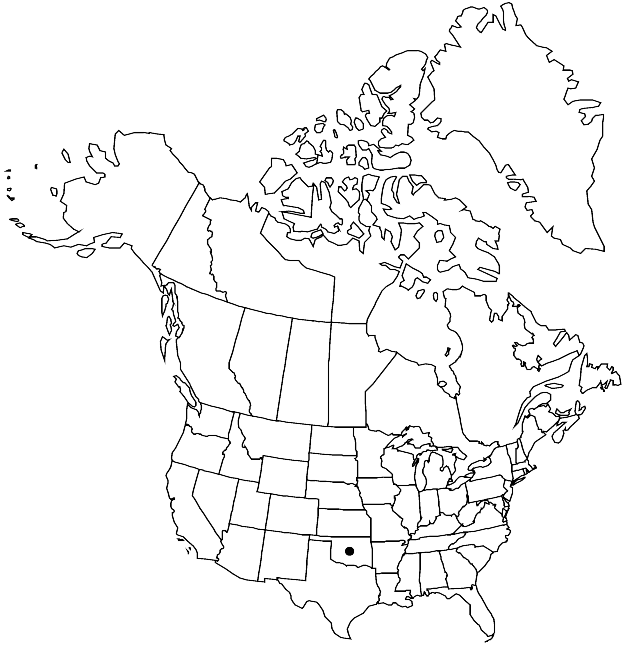Fontinalis redfearnii
Bryologist 94: 201, figs. 1 – 6. 1991.
Plants to 15 cm, dark green to yellowish. Stems robust, rigid; stem and branch apices loosely foliate; axillary hairs 740–918 µm, 8–12 cells, basal-cells 1 or 2, short-rectangular, reddish-brown, distal cells long-cylindric, hyaline, red with age. Leaves dimorphic, differing greatly in size. Stem-leaves erect-patent when dry, stiffly patent to spreading when moist, narrowly lanceolate to linear, plane, concave basally, 6–9 mm; margins plane at apex; apex broadly obtuse; medial laminal cells 80–160 × 8–12 µm. Branch leaves concave, 3–4 mm; apex acute to obtuse. Sporophytes unknown.
Habitat: Bases of Taxodium, rock
Elevation: moderate elevations (250 m)
Discussion
Of conservation concern.
Fontinalis redfearnii is found only in McCurtain County and is separated from other species of Fontinalis by its robust size, distantly spaced leaves, loosely foliate stem apices, strongly dimorphic stem and branch leaves, and narrowly lanceolate to linear-lanceolate stem leaves that have broadly obtuse, consistently plane apices. Three other species of Fontinalis with wide-spaced, narrowly lanceolate leaves with plane apices can be confused with F. redfearnii. Fontinalis hypnoides (tenella expression) differs from F. redfearnii in having flaccid to somewhat stiff stems and smaller (5–7 mm), monomorphic leaves. Fontinalis sphagnifolia (vernalis expression) differs from F. redfearnii in having tightly long-attenuate stem and branch apices, flaccid stems, weakly dimorphic leaves, and a mixture of leaf apices with plane or erect to incurved margins. Fontinalis sullivantii is the only other species of Fontinalis with such strongly dimorphic leaves. Although F. sullivantii typically differs from F. redfearnii in having much smaller plants and flaccid stems, there are robust, stiff forms of the species that closely approach F. redfearnii. However, all forms of F. sullivantii differ from F. redfearnii in having narrower leaves with acute apices.
Selected References
None.
